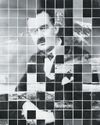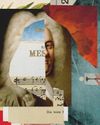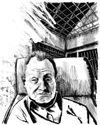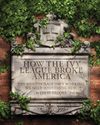And what would happen if it actually works
Like a little white Lazarus with red eyes, the paralyzed mouse was walking again.

A few days earlier, the mouse had been sprawled on an operating table while two Chinese graduate students peered through a microscope and operated on its spine. With a tiny pair of scissors, they removed the top half of a fingernail-thin vertebra, exposing a gleaming patch of spinal-cord tissue. It looked like a Rothko, a clean ivory rectangle bisected by a red line. Cautiously—the mouse occasionally twitched—they snipped the red line (an artery) and tied it off. Then one student reached for a $1,000 scalpel with a diamond blade so thin that it was transparent. With a quick slice of the spinal cord, the mouse’s back legs were rendered forever useless.
Or they would have been, except that the other student immediately doused the wound with a faintly amber fluid, like the last drop of watered-down scotch. The fluid contained a chemical called polyethylene glycol, or peg, and as the students stitched the mouse back up, the chemical began to stitch the animal’s nerve cells back together.
Two days later, the mouse was walking. Not perfectly—its back legs lurched at times. But compared with a control mouse nearby—which had undergone the same surgery, minus the peg, and was now dragging its dead back legs behind itself—it puttered around brilliantly, sniffng every corner of its cage.
If peg ever proves effective in humans, it will be a near-miraculous therapy: Despite spending many millions of dollars on research over the past century, doctors have no way to repair damaged spinal cords. But that’s not the only reason the man directing this research—a surgeon in Harbin, China, named Xiaoping Ren—has been garnering attention in scientific circles.
This story is from the September 2016 edition of The Atlantic.
Start your 7-day Magzter GOLD free trial to access thousands of curated premium stories, and 9,000+ magazines and newspapers.
Already a subscriber ? Sign In
This story is from the September 2016 edition of The Atlantic.
Start your 7-day Magzter GOLD free trial to access thousands of curated premium stories, and 9,000+ magazines and newspapers.
Already a subscriber? Sign In

The Dark Origins of Impressionism
How the violence and deprivation of war inspired light-filled masterpieces

The Magic Mountain Saved My Life
When I was young and adrift, Thomas Manns novel gave me a sense of purpose. Today, its vision is startlingly relevant.

The Weirdest Hit in History
How Handel's Messiah became Western music's first classic

Culture Critics
Nick Cave Wants to Be Good \"I was just a nasty little guy.\"

ONE FOR THE ROAD
What I ate growing up with the Grateful Dead

Teaching Lucy
She was a superstar of American education. Then she was blamed for the country's literacy crisis. Can Lucy Calkins reclaim her good name?

A BOXER ON DEATH ROW
Iwao Hakamada spent an unprecedented five decades awaiting execution. Each day he woke up unsure whether it would be his last.

HOW THE IVY LEAGUE BROKE AMERICA
THE MERITOCRACY ISN'T WORKING. WE NEED SOMETHING NEW.

Against Type
How Jimmy O Yang became a main character

DISPATCHES
HOW TO BUILD A PALESTINIAN STATE There's still a way.